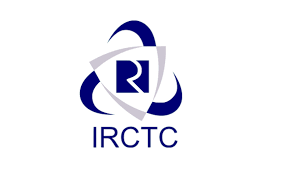25 Jul 2025
As of July 1, 2025, Indian Railways has implemented a modest fare hike, increasing ticket prices by 1 paise per kilometer for non-AC classes and 2 paise per kilometer for AC classes. While the adjustment appears marginal for passengers, it has ignited a wave of positive sentiment across the railway sector, particularly in the stock market, where railway-related companies have seen significant gains.
Impact on Passengers
The fare hike translates to a minimal increase in travel costs.
For instance:
A 500-km journey in a non-AC sleeper class will cost approximately ₹5 more.
The same distance in an AC 3-tier coach will see an increase of about ₹10.
This measured approach ensures affordability for the millions of passengers who rely on Indian Railways daily while generating additional revenue to support infrastructure upgrades and operational efficiency.
Boost for Railway Stocks
The fare revision has acted as a catalyst for railway-related stocks, reflecting investor confidence in the sector’s growth trajectory. Key players have experienced notable market movements:
IRCTC (Indian Railway Catering and Tourism Corporation): Shares surged by 4.2% in the week following the announcement, driven by expectations of improved ticketing margins and sustained growth in online booking revenue.
RVNL (Rail Vikas Nigam Limited): The stock rose by 3.8%, fueled by optimism around increased project funding and government-led railway modernization initiatives.
Texmaco Rail & Engineering: Gained 2.5%, supported by its strong order book and focus on rolling stock manufacturing.
IRCON International: Saw a 3.1% uptick, bolstered by its diversified portfolio in railway infrastructure projects.
These gains underscore the market’s belief in the long-term potential of India’s railway sector, particularly as the government continues to prioritize modernization and sustainability.
Broader Sectoral Context
The fare hike aligns with the government’s broader vision for a self-sustaining railway ecosystem. Indian Railways, which operates over 13,000 trains daily and carries more than 23 million passengers, has been under pressure to balance affordability with financial viability. The additional revenue from the fare hike—estimated to generate ₹1,500–2,000 crore annually—will likely support:
Infrastructure upgrades: Expansion of high-speed corridors like the Mumbai-Ahmedabad Bullet Train and dedicated freight corridors.
Electrification goals: Indian Railways aims to achieve 100% electrification by 2026, reducing carbon emissions and operational costs.
Station redevelopment: Over 1,300 stations are being modernized under the Amrit Bharat Station Scheme to enhance passenger experience.
Investor Takeaway
This fare hike, though small, signals the government’s commitment to strengthening Indian Railways’ financial health without burdening passengers. For investors, it highlights several opportunities:
Sustained sectoral growth: Ongoing reforms and increased budgetary allocations (₹2.65 lakh crore for FY 2025–26) make railway stocks a compelling long-term investment.
Policy-driven momentum: Even incremental policy changes, like this fare adjustment, can drive positive market sentiment and stock performance.
Diversified exposure: Companies like IRCTC, RVNL, and Texmaco offer exposure to ticketing, infrastructure, and manufacturing, catering to varied investor risk profiles.
As India’s railway sector continues to modernize and expand, investors with a long-term horizon may find railway and infrastructure stocks increasingly attractive. Keep an eye on upcoming policy announcements and project milestones for further cues on market movements.
Disclaimer: Stock market investments are subject to risks. Past performance is not indicative of future results. Consult a financial advisor before making investment decisions.
